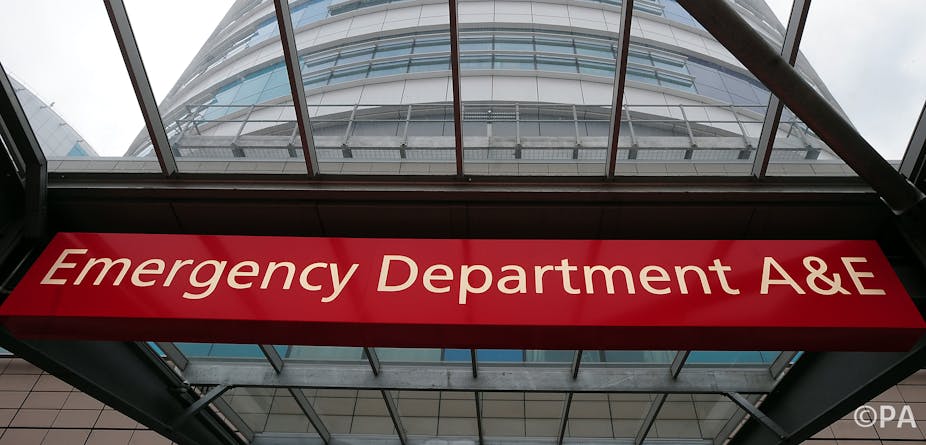Politicians and policy makers are blaming failures in out-of-hours GP care for the rising demand on accident and emergency (A&E) units.
The number of attendances at A&E departments in England rose by more than a million to 18,300,190 people in the 12 months from February 2012 to January 2013 compared with the year before. More than a third of these (39%) were discharged from A&E with no follow up, which means they didn’t require further hospital treatment.
Now official figures from the King’s Fund show A&E waiting times in the first three months of 2013 are the highest they’ve been in almost a decade.
These figures sound alarming, and indeed they have caused alarm among politicians, policymakers, managers, clinicians and patients. Health secretary Jeremy Hunt’s reaction has been to announce measures to make GPs “more accountable”, particularly for out-of-hours care. The Royal College of General Practitioners, due to give evidence to MPs today, has responded critically and defensively.
Not the full picture
But the figures don’t present the full picture. There is little research evidence to support the notion that GPs can reduce attendance at A&E by opening their practices for longer hours.
The increasing A&E attendance figures include not only attendance at hospital A&E departments but also at minor injury and urgent care and walk-in centres. These were set up to provide a service for people with less urgent or serious problems as a legitimate alternative to GPs or A&E and some of the growth will be attributable to people attending these.
Another issue is that although the numbers attending A&E have gone up by around 6% in the past year, they’ve actually been rising steadily over the past ten years. This has led to an association being made between the rise in A&E use and a change to GP contracts - made in 2004 - that led to GPs no longer being responsible for patients out of hours.
The impact of four-hour targets
There is some evidence that the rise in emergency admissions to hospitals in the UK over the past ten years may be partly attributable to changes that occurred in 2004 with the new GP contract - but also with the introduction of a four-hour waiting time limit in A&E in Labour’s NHS Plan in 2000.
This both increased admissions by “forcing” admission of people to avoid breaching waiting time targets and encouraging people to attend A&E beause there was a fixed waiting time.
Paediatric short stay admissions for children younger than ten rose by 22% between 1997 to 2006 and part of this change was also attributed to changes in out-of-hours care, despite the increase beginning before 2004.
Research suggests other factors
We’re currently producing a systematic review, looking at evidence from a number of good quality research studies. One of these UK studies suggested that GP practices with lower levels of patient satisfaction with telephone access to the practice have slightly higher rates of A&E attendance - as do smaller practices - but the overall effect of both of these was small. But living closer to the A&E department is also associated with more visits
A second UK study found no association between patients’ ratings of opening hours, telephone or face-to-face access, or out-of-hours care and attendance at A&E.
What the study did find was that factors strongly associated with high levels of A&E use were social deprivation, high levels of illness in a GP practice’s population, higher numbers of people receiving incapacity benefits or living in lone parent households.
Studies from other countries are less useful in informing the debate as systems such as those in the US are very different to the NHS. The majority of international studies also identify patient factors such as deprivation as very important. But there is evidence from four studies - Christakis, Burge, Ionescu, McCusker - that greater continuity with a GP is associated with lower rates of A&E use.
While there needs to be more research evidence from the UK, what we do know suggests that the key factors that drive emergency department use are associated with the population the GP practice services rather than the services provided by the practice. However, greater continuity of care may be an exception to this rule.
What this means for the NHS is that reforming out-of-hours care and GP services is unlikely to have a major impact on A&E attendance.
We need to be clear what we are counting in the A&E figures, where the best place is to offer care to patients looking for services - particularly out-of-hours - and help GP practices to deliver continuity of care in working hours.

